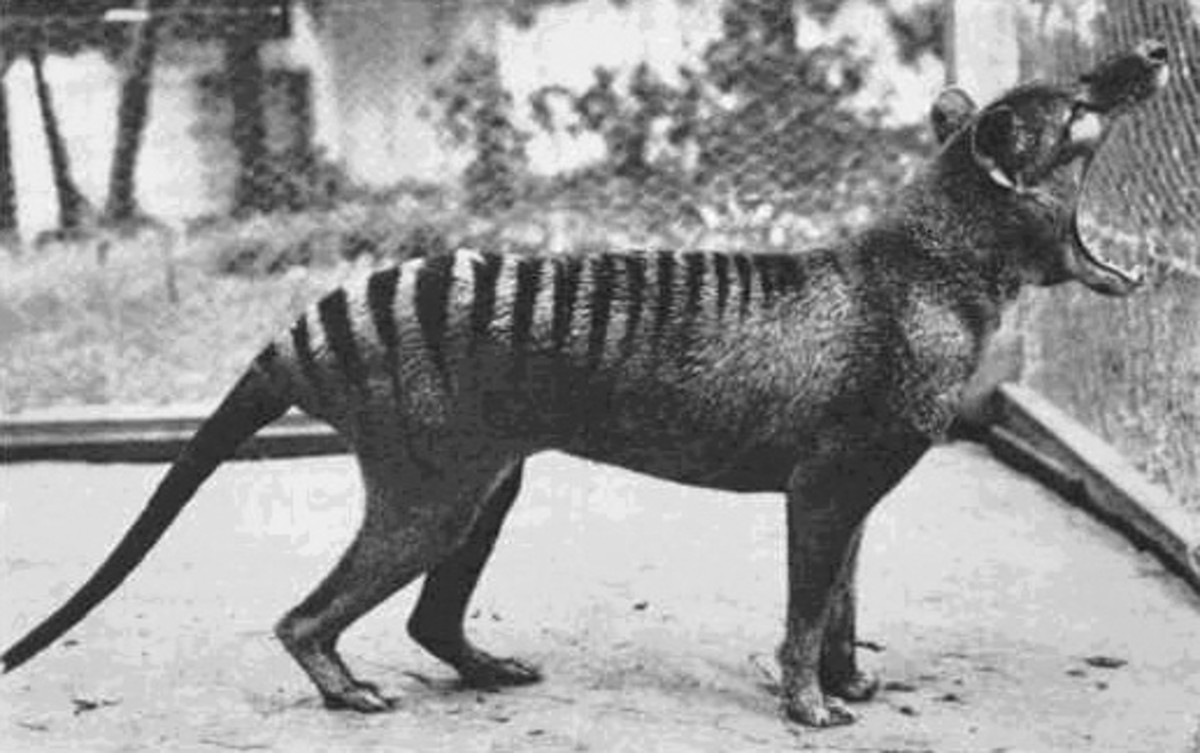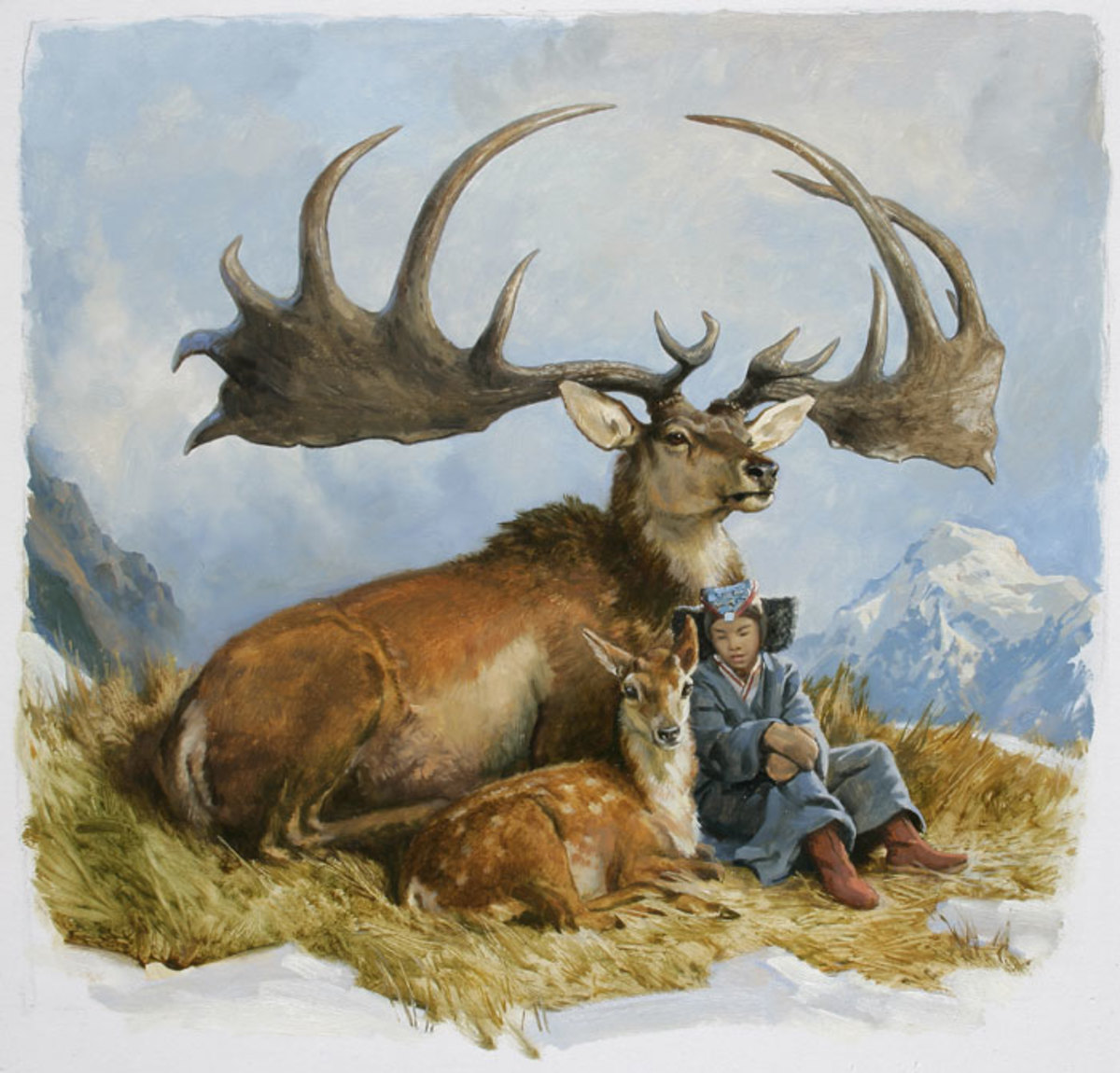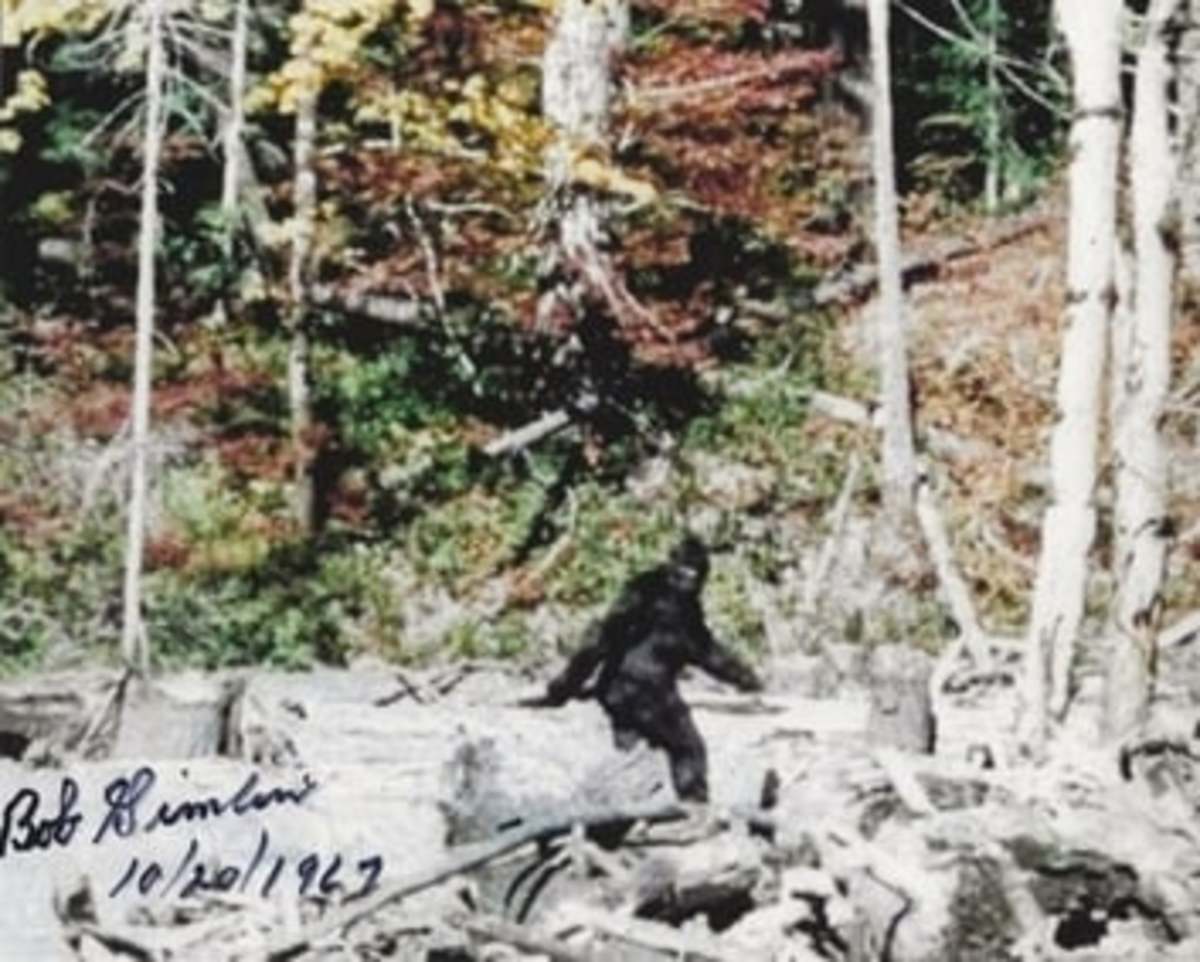- HubPages»
- Education and Science»
- Life Sciences»
- Endangered Species
The Continued Existence of the Thylacine
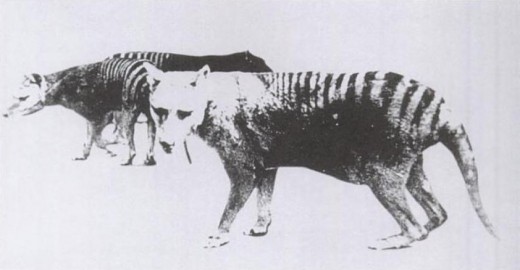
There are many mysteries surrounding the Thylacine, or Thylacinus cynocephalus to use its correct name, that remain to this day. Commonly known as the Tasmanian Tiger, it is the only member of the Thylacinidae family to exist within historical times. The Thylacine was a carnivorous mammal with very unusual physical features. One early European who observed the Tasmanian Tiger referred to it as "a kangaroo masquerading as a wolf" and saying it had the head and teeth of a wolf, the stripes of a tiger, the tail of a kangaroo and the backward-opening pouch of an opossum.
The Thylacine was in fact a strange looking animal. Looking somewhat like a
large dog, but with a stiff and pointing tail that gradually tapered from the body. It ranged in colour from a greyish brown through to
yellowish brown with 12 to 20 dark brown to black stripes running from the
tip of the tail to almost the shoulder. It also sported faint white markings around the mouth, ears and eyes. The female had a rear opening pouch. The Thylacine was digitigrade, meaning it walked on its toes, giving it a stiff and awkward gait.
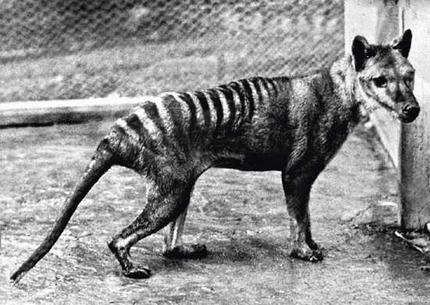
Video of Benjamine
The Demise of the Thylacine
While the Tasmanian Tiger derived its name from its appearance and habitat it did, at one time, inhabit the Australian mainland and New Guinea. It is commonly believed the competition by the Indigenous population as well as the introduction of the Dingo led to its demise from the main lands, with Tasmania providing a safe haven.
Unfortunately
European settlers, blaming the Thylacine for large sheep losses, hunted
them to
the point extinction. In the early 1840s private bounties began to be
taken out on the Thylacine, by the early 1860s their habitat had been
almost entirely restricted to the mountanous and remote parts of the
island. Over 2000 Thylacines were killed for a government bounty
between 1888 and 1909.
By 1905 the Thylacine population had decreased dramatically and by 1915 sightings were rare. The last know wild animal shot was on 30 May 1930, and the last captive animal died at Hobart Zoo on September 7, 1936. In 1936 legal protective status was gained but by then the wild population were at critical numbers. In 1966 a wildlife reserve was established in the Thylacines last known habitat but no solid proof of their continued existence had been seen.
1973 Thylacine Sighting
Links regarding sightings
- Alleged Mainland Thylacine Sightings
A discussion which explores the possibility that the Thylacine or Tasmanian tiger may still exist on the Australian mainland (this is the video above.) - Thylacine Sightings
Documentation and analysis of sightings of the Thylacine (Tasmanian Tiger) in areas adjacent to and contiguous with the Panama Forest in North Eastern Tasmania. - 'Sighting' of Tasmanian tiger sparks 1.2m bounty hunt
Tasmanian tiger is once again the subject of a manhunt...Bounty for proof of existence - No show by tigers of Tasmania
They came, they searched and they left. The Bulletin's $1.25 million bounty for a live Tasmanian tiger has expired without any proof. - Post Extinction - Thylacine Sighting Google Earth Tour
View sighting locations via google maps with a description of each sighting. - Thyla seen near CBD? - Tassie Tiger - www.smh.com.au
Tasmanian tigers are running wild in parkland 25 kilometres from Melbourne's CBD, according to at least 20 sightings reported to the Victorian government. - Extinct or not, the story won't die - Science - www.theage.com.au
When two German tourists turned off a Tasmanian road in February, planning to camp, they could not have known that they would be the catalyst for a media frenzy - Scientists look at droppings for extinct tiger | Reuters
Scientists in Australia plan to examine 50-year old animal droppings to try to answer one of the nation's great mysteries -- is the Tasmanian tiger truly extinct?

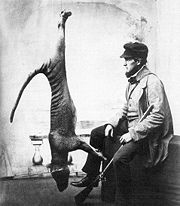
Continued Sightings
Sightings are still recorded to this day. In 1953 a rabbit trapper caught what he claimed was a Tasmanian Tiger, its hide was later taken by Flora and Fauna Services. In 1970, a timber getter, his father, brother and a friend, all witnessed an animal they described as a Thylacine. In 1980, a women travelling with her two children stated she saw a Thylacine approximately 10 meters away from her around her chicken coop. Again in 1981, 1982, 1988 and 1989 clear sightings were recorded by four separate couples while traveling or walking through bush areas in Tasmania. One of the observers involved said of the animal: "it had a whip like tail and had stripes on it. It looked like a dog but it sure was no dog". All of these sightings occurred within close proximity in location and time in the north eastern Tasmania adjacent to the Panama Forest.
In 2005, two German tourists set off a media frenzy when they reported seeing, and photographing, a Tasmanian Tiger. The media quickly entered into the debate of whether the Thylacine was still living out there somewhere. The Bulletin even went as far as to offer an Aus$1.25 million dollar reward for the capture of a "live, uninjured specimen'. Another company chipped in further Aus$1.75 million. Bringing the total to $3 million Australian dollars (Both of these offers have since expired). It even prompted the director of the Tasmanian Museum and Art Gallery, Bill Bleathman, to propose the museum and magazine embark on a joint program of long-term research to investigate the many sightings reported to the museum.
While no firm proof has been received to date confirming that the Thylacine does still exist, many believe it is only a matter of time until this will be found. Their natural habitat is slowly becoming smaller as we encroach on the isolated areas of Tasmania through logging, farmland and residential areas. Only time will tell if, in fact, the Thylacine has been lurking out there the whole time.
Related Links
- David Fleay's 1945-46 Tasmanian Tiger Expedition
A presentation written by Rosemary Fleay-Thomson about her father, Dr. David Fleay's, 1945-46 expedition in search of the Thylacine or Tasmanian tiger. - The Thylacine Cloning Project
A discussion on the possibility of cloning the Thylacine or Tasmanian tiger using preserved genetic material. - The Thylacine Museum - A Natural History of the Tasmanian Tiger
An online museum dedicated to furthering public knowledge and interest in the Thylacine or Tasmanian tiger, a carnivorous marsupial of Australia. - The Thylacine - Australian Museum
What is a thylacine? Why did it become extinct? - Parks and Wildlife Service Tasmania - The Thylacine
Information from the Tasmanian Parks and Wildlife Service relating to the description, diet, habitat, breeding, extinction and continued sightings.
© 2009 Rachel Evans

